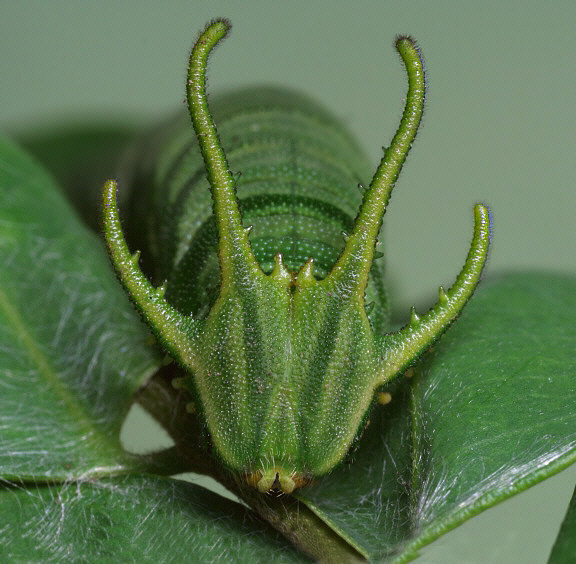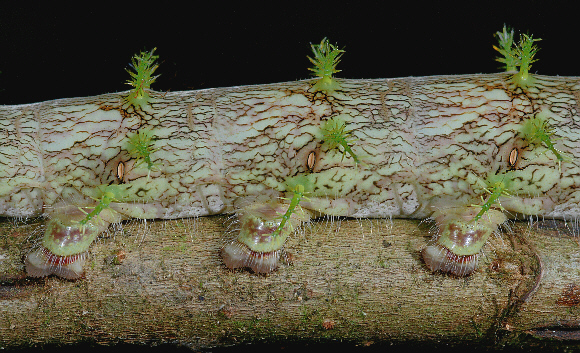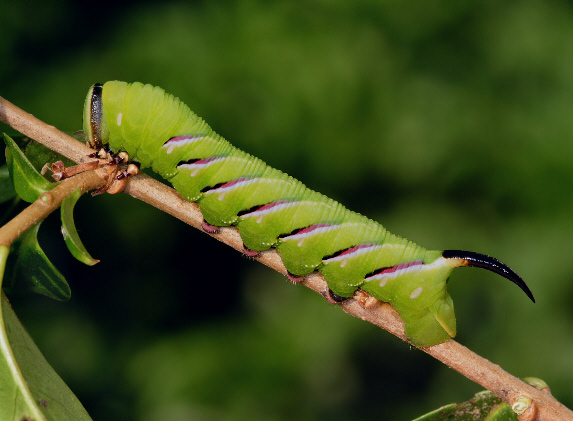Anatomy
A larva has only 2 functions during it’s life – to eat and survive. It’s basically just an eating machine with large powerful jaws, a huge gut, and a highly elastic skin that stretches to accommodate the huge amount of food consumed.
Larvae do not possess external wings. Even the tiniest larvae however have rudimentary wing-pads under their skin. These are initially extremely small, but by the time the larvae are fully grown the wing pads have developed veins and other structural features found in adult butterflies.
 Head of 5th instar Polyura hebe ( Nymphalidae ), Singapore – Horace Tan
Head of 5th instar Polyura hebe ( Nymphalidae ), Singapore – Horace Tan
All butterfly larvae have six true legs located on the first 3 segments. These legs are used primarily for holding and manipulating the leaves on which they feed. On the abdominal segments they have 4 pairs of false legs called prolegs.
These “walking” legs operate by hydraulic pressure. Each has a rosette of microscopic hooks around its base, which enable the larvae to maintain a strong grip on twigs or leaves. There are also a pair of gripping anal claspers at the tail end of the body, which are used to secure the caterpillar while the prolegs are doing the walking.

The spiracles can be seen clearly on this Cerodirphia Saturniid larva from Peru – Adrian Hoskins
Caterpillars breathe through oval spiracles which open and close to allow gas exchange with the atmosphere. There are 2 spiracles per body segment, one on each side of the body.

Caterpillar of Privet Hawkmoth Sphinx ligustri ( Sphingidae ), England – Adrian Hoskins
